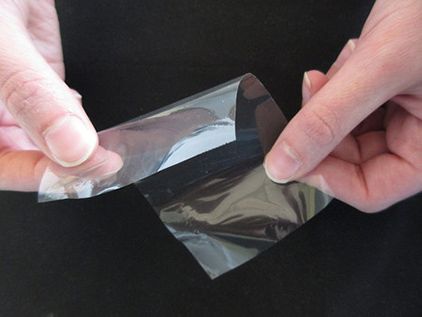It looks like Alzheimer’s is not a one way process!
New research study suggests early stage Alzheimer’s could be reversed using a repair approach to this age-related disease.
https://youtube.com/watch?v=pVK5UeimatQ
In Brief
IBM understands the unique nature of its artificial intelligence (AI) software assistant Watson, and so they are not taking the direct consumer approach of Siri, Cortana, Alexa, or Google’s Assistant.
In partnership with H&R Block, Watson is being trained “on the language of taxes,” according to IBM’s press release announcing Watson’s new role as the world’s first AI tax preparation assistant.
In Brief Research by Russian scientists has revealed the efficacy of cold plasma as a treatment for non-healing wounds. Their study conclusions could lead to much-needed relief for the millions of people suffering from chronic open wounds.
Non-healing wounds are troublesome to treat, with current methods teetering between extremely difficult and impossible, but cold plasma might be able to change all that.
Researchers have attempted to use cold atmospheric-pressure plasma — a partially ionized gas with a proportion of charged particles close to 1 percent and a temperature of 99,726°C (179,540ºF) — for medical treatment before, but never specifically for non-healing wounds. Apart from confirming the bactericidal properties of cold plasma and showing that cells and tissues have a high resistance to it, those earlier studies yielded non-conclusive results.
Posted in biotech/medical, life extension | Leave a Comment on Senescent cells are the driver of many age-related diseases, you can help us to develop ways to detect and remove them

Researchers at the California Institute of Technology (Caltech) and the Swiss Federal Institute of Technology have developed a material that can sense changes in temperature with more sensitivity than human skin. The team discovered that flexible films made from pectin demonstrate an electrical response, caused by the release of calcium ions, following very small changes in temperature. Increased temperature causes the pectin molecules to “unzip”, allowing the release and movement of calcium ions.
Published in Science Robotics, this study looked to nature to find biological examples of similar temperature sensitivity. The researchers reported that specialized structures in pit viper snakes could sense similarly tiny changes in temperature, based on the release of calcium ions. Pit viper snakes use these structures to sense the bodily warmth of their prey when hunting at night. The team could replicate this using the artificial film by heating a stuffed toy to 37°C (mammalian body temperature) and placing it in front of the film. The film was able to sense the teddy bear from a meter away within 20 seconds.
Easy to fabricate and inexpensive, these films could be of great benefit for use in smart prostheses, providing an additional sense for disabled folks. In fact, given that the films can respond to temperature more sensitively than human tissues, it could even be akin to a “super sense”. Other potential biomedical applications include smart bandages that can measure and report on changes in temperature as a sign of wound infection.
Scientists on the quest to offer more hope for glioblastoma patients may have found a way to stop the growth of the deadly brain tumor. The discovery targets the genes that sustain the tumor growth past the early stages with the drug mithramycin, which may be more effective than the current chemotherapy treatments.
Glioblastoma is the most common and deadly form of primary brain cancer. In glioblastoma, malignant glial cells form vast networks of tendrils throughout the brain, making it nearly impossible to surgically remove all the cancerous tissues. Dubbed as the “octopus tumor,” the tumor can evade even the most aggressive surgeries, chemotherapies, and radiotherapies, leaving patients with a five-year survival rate of less than 10 percent. Patients are in desperate need of better alternatives or supplementary treatments to beat this notoriously deadly cancer.